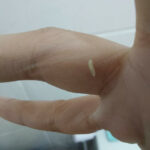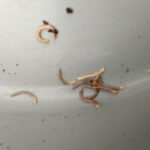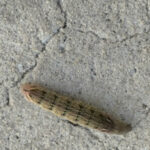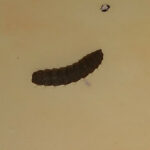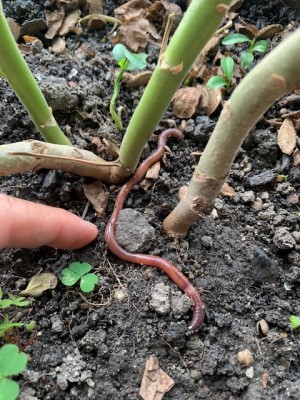Red worms are epigeic or detritivorous earthworms. They do not eat animal or human flesh. Red worms are vegetarians, so they eat vegetables and other organic matter. There are more than 120,000 species of flies around the world and many of the most common flies, such as the fruit fly, eat decaying fruits and vegetables as well. Fruit flies are typically found in unsanitary conditions such as trashcans and garbage dumps. They are not there to eat rotting animal flesh, they are there to find rotting fruits, vegetables, and other similar edibles.
Maggots, on the other hand, will eat any type of rotting meat, including the rotting or diseased flesh of animals and humans. However, maggots will not eat anything that is alive. Maggots appetites’ are ravenous, so they will eat dead flesh very quickly. But rather than eat live flesh, once the dead flesh is gone, the maggots will eat one another.
Maggots have a number of uses in the medical world. “Maggot Therapy,” has been used in the medical world since ancient times. Also called “larval therapy” and “Maggot Debridement Therapy” (MDT), maggot therapy uses live, disinfected maggots to eat the dead tissue on non-healing skin or the soft tissue of humans and animals. The maggots do not touch the live tissue. During the process of eating away dead tissue, the maggots discharge powerful antibiotics, which help treat the wound.
If you would like to test the speed and efficiency of a maggot when consuming dead animal flesh, try placing a small dead rodent in a vented container along with a handful of maggots. Maggots thrive in this stage in warm, dark, moist conditions, but they can live just about anywhere until they morph into flies, preferably wherever there is an abundance of rotting material. However, plant maggots do exist, in which case, the animals will only feed on fruits and leaves.
If you are planning an experiment with maggots, it is important to keep in mind that maggot infestations can be quite dangerous. Maggots can burrow into the skin and the intestines and cause damage to vital organs. They can also cause lesions. If you have an infestation and you are trying to get rid of the maggots, spraying with insecticide, dousing them with hydrochloric acid or pouring salt over them just won’t work. Maggots are smart, tough, and they are born with ferocious appetites for rotting material.
Maggots have to feed from several days up to several weeks, which is why they are not too eager to leave their birthplace. After they are done feeding (and only when they are done feeding), they will migrate to a dry place, typically outdoors, to hatch into the adult fly, beetle, or moth. So the only way to get rid of them sooner is to kill them.
The first thing you should do to get rid of maggots is get rid of their food source. This means clear all trash, dead animals or other rotting material from the area where you see them. One of the best poisons for maggots is permethrin. Permethrin kills maggots and any other insects on contact. This synthetic chemical is a neurotoxin that works by disabling the neuron membranes. It is important to note that permethrin is dangerous to household pets such as fish and cats. Other ways to get rid of maggots include:
-Pouring boiling hot water over the maggots
-Feeding them to fish
-Using powdered poisons formulated specifically for maggots
To prevent maggots, tie up all garbage tightly. Never leave meats or other foods out in the open for too long, especially when it’s warm. Flies and maggots love warm weather. All it takes is one fly to lay hundreds of eggs and in 8-20 hours you could have a full-blown infestation in your home or trashcan.
All About Worms is always free, always reader-supported. Your tips via CashApp, Venmo, or Paypal are appreciated! Receipts will come from ISIPP Publishing.




